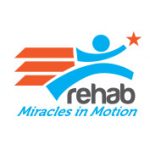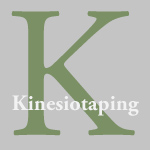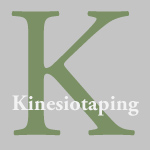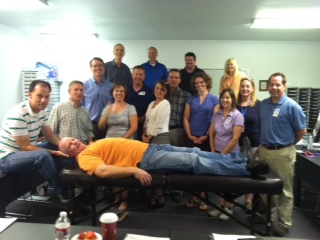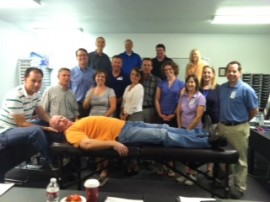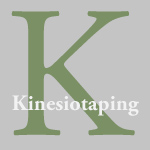 Where: Salt Lake City College – Jordan Campus
Where: Salt Lake City College – Jordan Campus
3491 W 9000 S
West Jordan, UT 84088
When: Friday, April 12 11:30 am – 9:00 pm (Dinner Served)
Saturday, April 13 8:00 am – 5:30 pm (Lunch Served)
Ensign Services, Inc. hosts seminars in facilities that are ADA accessible. Please let Kelly Alvord (kalvord@ensigngroup.net) know if you will need any special accommodation.
Instructor: ‘Dee’ Virginia Ellis, PTA, CKTI
Dee is a Physical Therapist Assistant who has practiced in many different settings and states. Dee specializes in aquatic therapy and Pilates based spinal stabilization and orthopedic outpatient rehab. She has been a PTA for 15 years, graduating with her A.A.S. from Community Colleges of Southern Nevada in Las Vegas with a Gerontology Wellness Specialty. She also did undergraduate study at San Diego State University in California. Dee has a special interest in wellness and prevention.
Dee has been a Certified Kinesio® Taping Practitioner for 8 years and has been a Certified Kinesio® Taping Instructor since 2005. She has her American Physical Therapy Association (APTA) Advanced Proficiency in the musculoskeletal realm and was the recipient of the Texas Physical Therapy Association’s (TPTA) Joy Davenport award in 2008. She is an active volunteer in the APTA, the TPTA and the Aquatic Section of the APTA. Dee has presented continuing education on Electrical Modalities, Aquatic Physical Therapy and Kinesio® Taping: Fundamentals and Whole Body Techniques.
Dee currently works for as a PRN for local south Texas hospital systems and home health agencies.
Topic: Kinesio Tape Course (KT1 and KT2)
KT1: Fundamental Concepts & Basic Muscle Applications (To be taken in conjunction with KTAI approved KT2 course)
The KT1 course is designed to introduce practitioners to the Kinesio Taping® Method. During this eight-hour class, the instructor will introduce Kinesio Taping® concepts, theory and history, and discuss the four major physiological effects; skin, muscle, circulatory/lymphatic, and joint. During lab sessions, attendees will have ample time to practice Assessment Tests approved for the enhancement of their Kinesio Taping® skills and muscle applications for both the upper and lower body. Upon completion of this course, attendees will be able to discuss and apply the Kinesio Taping® Method to relax overuse syndromes, stimulate weak muscles, and decrease pain and swelling.
KT2: Advanced Concepts & Corrective Techniques (To be taken in conjunction with KTAI approved KT1 course – prerequisite is completion of KT1 course)
The KT2 course builds on material learned in KT1. During this eight-hour class, the instructor will introduce the six Corrective Techniques (Mechanical, Functional, Space, Fascia, Ligament/Tendon, and Lymphatic) and discuss their application in a variety of clinical conditions. During lab sessions, attendees will have ample time to practice applying these techniques to a variety of upper and lower body conditions. Upon completion of this course, attendees will be able to discuss and apply the Kinesio Taping® Method to orthopedic and neurological conditions.
COURSE OBJECTIVES. Upon completion of this course, the participant will be able to:
- Describe the concepts of Kinesio Taping®.
- Review muscular anatomy as it is related to Kinesio Taping®
- Explain and apply the concepts of the Kinesio Taping® Method.
- Describe the unique qualities of the Kinesio Tex Tape.
- Recognize the principles of Kinesio Tex Tape application.
- Utilize and demonstrate application skills in guided laboratory sessions.
- Demonstrate application skills during lab sessions.
- Practice the various cutting techniques and their clinical application.
- Apply Kinesio Taping® Method to relax and stimulate muscles.
- Apply Kinesio Taping® Methods for pain, swelling, joint mobility and stability.
- Apply various taping techniques for treatment of the spine, and upper/ lower extremity dysfunction
- Apply various taping techniques for treatment of unique conditions using the concepts and principals of the Kinesio Taping® Method.
Who Should Attend? PTs, OTs, ATs, DCs, LACs, MTs, PTAs, OTAs and other medical practitioners. THIS COURSE IS INTENDED FOR LICENSED HEALTH CARE PRACTITIONERS ONLY.
CEUS: You can submit 16 hours continuing education credits to UT Physical Therapy Association. The Kinesio Taping® Association is an approved provider for AOTA (Provider # 4489). The assignment of AOTA CEU’s does not imply endorsement of specific course content, products, or clinical procedures by AOTA. The Kinesio Taping® Association is recognized by the Board of Certification, Inc. (BOC) to offer continuing education for certified athletic trainers (provider # P2293). Kinesio Taping Association is approved by the National Certification Board for Therapeutic Massage and Bodywork (NCBTMB) as a Continuing Education Approved Provider (Provider #450030-06).
Cancellation/Refunds: No refunds
KINESIO TAPING® AGENDA
Friday, April 12, Day 1 – Fundamental Kinesio Taping
11:30 Sign in
12:00 Instructor Introduction and Bio
12:10 – 2:00 Introduction to Kinesio Taping Concepts, Theory and History, Qualities of Kinesio Tape, Differences, Benefits and Finger Demonstration, introduction of Five Major Physiological Effects and Skin Function, Circulatory Function, KT Skin & Fascia Function, Iliocostalis Lumborum Demo Lab, KT Muscle Function and Basic App Concepts
2:00 Break
2:15-3:30 Joint Function; Biotensegrity; Application Basics, Directional Lab – Upper Trapezius, Challenges, Contraindications & Precautions, Intro to KT Assessment Tests
3:50 Q&A
4:15-6:15 KT Cervical Flexion Assessmet, Longissimus Cervicis (Cervical Paraspinals) Application Lab, KT Cervical Extension Assessment, Scalenus Anterior Lab, KT Trunk Flexion Assessment, Rectus Abdominis App Lab, KT Pectoral Girdle Assessment, Pectoralis Major and Rhomboid Major Lab,
6:15 Dinner
6:45–8:00 KT Hip Rotation Assessment with Lab, Gluteus Medius App Lab, KT Leg Raise Assessment with Lab, Quadriceps Femoris App Lab, Review Five Major Physiological Systems, App Concepts, Assessment Questions, Extensor Digitorum Lab, Hamstrings Lab
8:00-9:00 Assessment Q&A; KT1 Review & Q&A, Application Requests; Conclusion
Day 2- Advanced Kinesio Taping
8:00 – 10:05 Overnight Responses, Troubleshooting, Assessment Questions, & KT1 Review, Basic Concepts of Corrective Techniques, Tension guidelines, & Precautions., Mechanical Correction, Y Technique with tension in the Tails and base, Mechanical Correction, I Technique, Mechanical Correction Lab: Patellar Tracking, Mechanical Correction, Shoulder Instability, Mechanical Correction Lab: Shoulder Instability
10:05 Break
10:20 – 11:30 Introduction to Fascia Correction, Fascial Oscillation and Gliding. “Y” Tension in Tails, Tension in Base, Rams Head., Fascia Correction, Y Technique with tension on the tails. Manual Fascial Glide Correction With Tension through the tails., Fascia Correction Lab, Fascia Correction, Y Technique with tension through the base. Manual Fascia Winding Correction Technique with tension in base., Fascia Correction Lab, “Y” Strip: Tension on Tails, Rams Head App, Fascia Correction Lab
11:30 Lunch
12:30 – 3:10 Introduction To Space Correciton. Space Correction “I” Technique, Space Correction “Donut Hole” App. Space Correction Lab, Space Correction “Star” App. Space Correction “Button Hole & I Strip” App. Space Correction Lab, Space Correction “Web” App and Lab, Introduction To Ligament/Tendon Correction, Ligament Correction, Tendon Correction “I” & “Y” Techniques, Ligament & Tendon Correction Lab
3:10 Break
3:25 – 5:15 Tendon Correcton with Plantar Fasciitis App, Tendon Correction With Plantar Fasciitis Lab, Introduction to Functional Correction, Function Correcton Technique, Functional Correction Lab, Introduction To Circulatory / Lymphatic Correction, Circulatory / Lymphatic Correction “Fan” Technique Lab, KT Clinical App Finger, Documentation, Billing, Precautions, Contraindications and Rules, Assessment Questions, Glossary Review, Application Requests and Q&A
5:10 – 5:30 Assessment Questions, Glossary Review, Application Requests; Q&A; Conclusion
COST: $569 for licensed professionals
$369 for students (limited space available)
$100 for Professionals working in a facility supported by Ensign Services, Inc.
Questions/Information/Registration: Kelly Wallerstedt, Ensign Services – Therapy
kwallerstedt@ensigngroup.net or 602-538-6783
 Our practice standards expect evidence-based approaches to the care we deliver. More and more, health plans including Medicare, Medicare Advantage and various commercial insurances are requesting outcomes to measure the value of the services we provide. Just recently, the IMPACT Act was signed into law, which will require standardized reporting of outcome measures for patients receiving therapy services in Post-Acute Care Settings.
Our practice standards expect evidence-based approaches to the care we deliver. More and more, health plans including Medicare, Medicare Advantage and various commercial insurances are requesting outcomes to measure the value of the services we provide. Just recently, the IMPACT Act was signed into law, which will require standardized reporting of outcome measures for patients receiving therapy services in Post-Acute Care Settings.


 Wow! This week, during our Transformational Leadership – Unit 3 discussion, Dr. Roussel shared a wealth of information on Emotional Intelligence as a Core Leadership Skill. Course Participants in can access the tools and resources available for further exploration of your own Emotional Intelligence and awareness of characteristics in others by visiting Ensign U. Today’s WebEx Meeting will also be uploaded. How does Emotional Intelligence impact you as a leader? If you haven’t had a chance to complete the viewing of resources in Unit 1 (Defining Leadership) and Unit 2 (Complexity, Chaos and Change), please take some time to do so. ALSO, the strengths assessment available to you through your book, Leadership 2.0, provides some amazing information to further your understanding of your own leadership strengths. Your personal code for completing the online strengths assessment is located at the back of the book. Please share your thoughts, questions, discussion, right here! Simply click the “Discuss” link to get started. THANK YOU FOR YOUR PARTICIPATION.
Wow! This week, during our Transformational Leadership – Unit 3 discussion, Dr. Roussel shared a wealth of information on Emotional Intelligence as a Core Leadership Skill. Course Participants in can access the tools and resources available for further exploration of your own Emotional Intelligence and awareness of characteristics in others by visiting Ensign U. Today’s WebEx Meeting will also be uploaded. How does Emotional Intelligence impact you as a leader? If you haven’t had a chance to complete the viewing of resources in Unit 1 (Defining Leadership) and Unit 2 (Complexity, Chaos and Change), please take some time to do so. ALSO, the strengths assessment available to you through your book, Leadership 2.0, provides some amazing information to further your understanding of your own leadership strengths. Your personal code for completing the online strengths assessment is located at the back of the book. Please share your thoughts, questions, discussion, right here! Simply click the “Discuss” link to get started. THANK YOU FOR YOUR PARTICIPATION.
